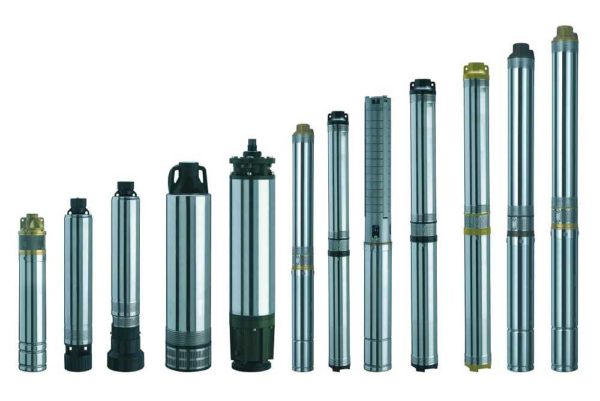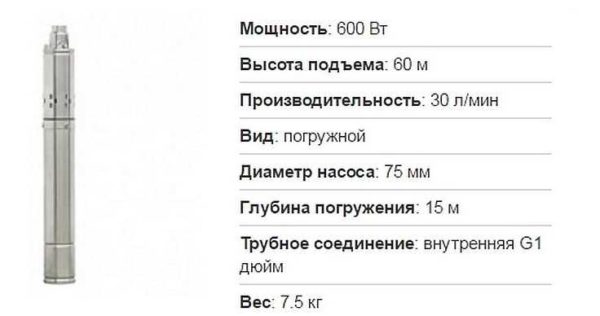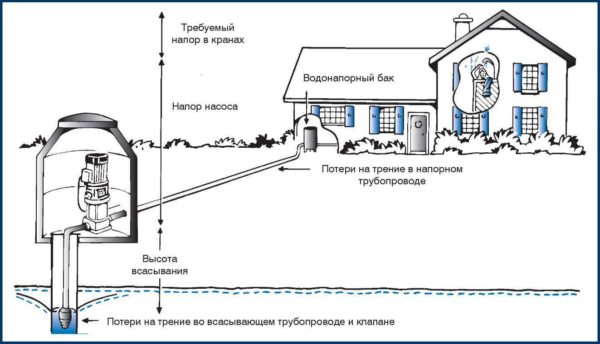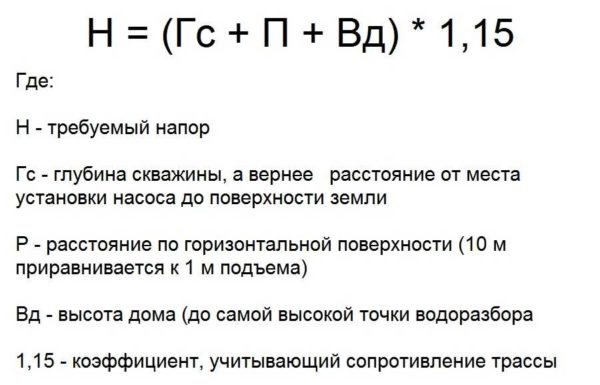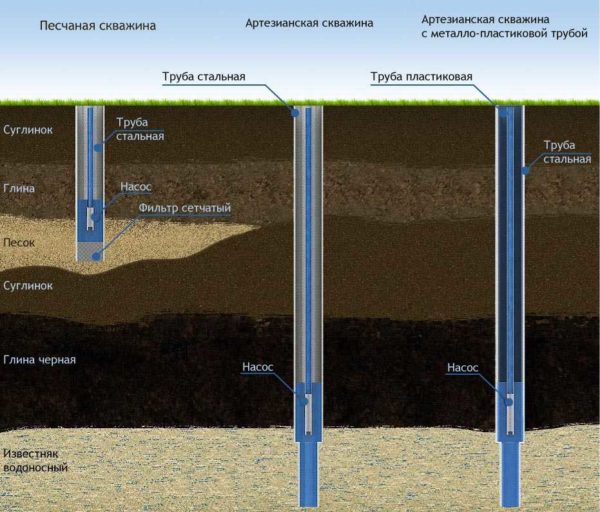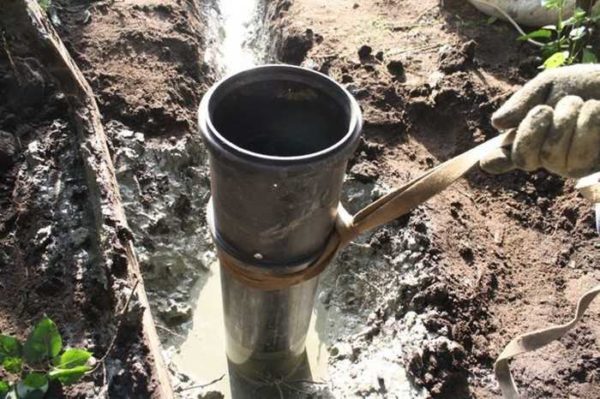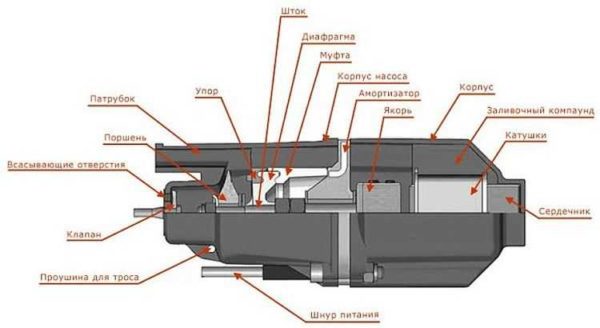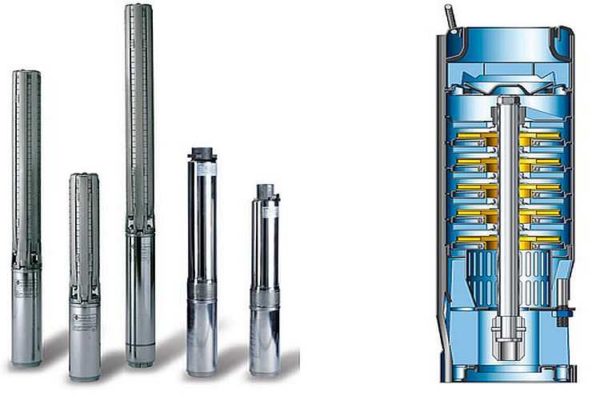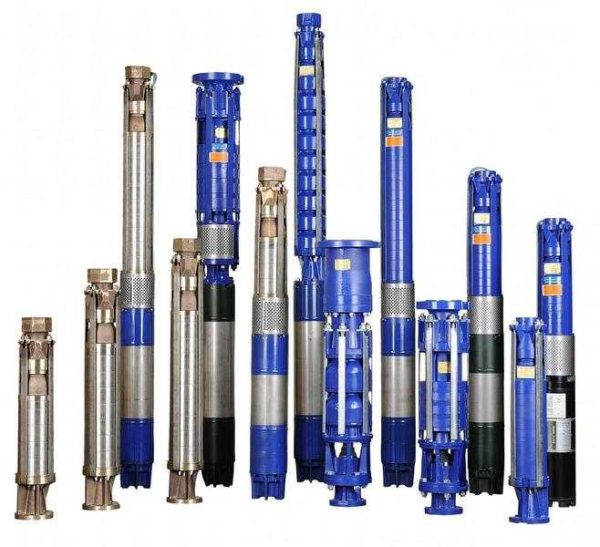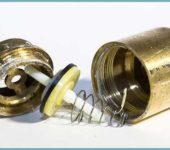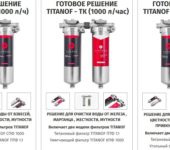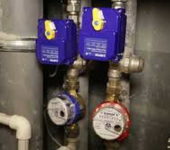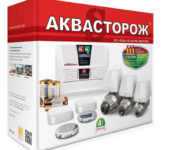How to choose a pump for a well
Having your own water source is great. And it's even better if these are wells - they usually have cleaner water than wells and they can supply water longer. But in order for water from it to enter the house, a whole system is required, the basis of which is a pump for a well.
The content of the article
Selection options
Well pumps are easy to distinguish even by their appearance. They represent an elongated stainless steel or plastic cylinder. Naturally, stainless steel models are more expensive - the steel must be of high quality (usually food grade AISI304). Plastic pumps are much cheaper. Although they are made of special shock-resistant plastic, they must be handled carefully - it still does not tolerate shock loads very well. All other parameters will have to be selected.
Water flow and pump performance
In order for the water in the house or in the country to have sufficient pressure, equipment is needed that can deliver the required volume of liquid. This parameter is called the pump capacity, measured in liters or milliliters (grams) per unit of time:
- ml / s - milliliters per second;
- l / min - liters per minute;
- l / h or cube / h (m3/ h) - liters or cubic meters per hour (one cubic meter equals 1000 liters).
Downhole pumps can lift from 20 liters / min to 200 liters / min. The more efficient the unit, the more power consumption and the higher the price. Therefore, we choose this parameter with a reasonable margin.
The required amount of water is considered in two ways. The first takes into account the number of people living and the total expense. If four people live in a house, then the water consumption per day will be 800 liters (200 liters per person). If there is not only water supply from the well, but also watering, then it is necessary to add some more moisture. We divide the total amount by 12 (not by 24 hours, because we use the water supply at night to a minimum). We get how much we will spend on average per hour. Dividing it by 60, we get the required pump capacity.
For example, a family of four and watering a small vegetable garden takes 1,500 liters per day. Divide by 12, we get 125 liters / hour. This will be 2.08 l / min per minute. If you have frequent guests, you may need a little more water, so the flow can be increased by about 20%. Then you will need to look for a pump with a capacity of about 2.2-2.3 liters per minute.
Lift height (head)
When choosing a pump for a well, you will inevitably study the technical characteristics. There are parameters such as lift height and dive depth. The lifting height - also called the head - is the calculated value. It takes into account the depth from which the pump will pump water, the height to which it must be raised in the house, the length of the horizontal section and the resistance of the pipes. Calculated by the formula:
An example of calculating the required pressure. Let it be necessary to raise water from a depth (place of installation of the pump) 35 meters. The horizontal section is 25 meters, which equates to 2.5 meters of lift. The house is two-story, the highest point is a shower on the second floor at a height of 4.5 m.Now we count: 35 m + 2.5 m + 4.5 m = 42 m.This figure is multiplied by the correction factor: 42 * 1.1 5 = 48.3 m. That is, the minimum head or lifting height is 50 meters.
If there is a water supply in the house hydroaccumulatedp, not the distance to the highest point is taken into account, but its resistance. It depends on the pressure in the container. One atmosphere is equal to 10 meters of head. That is, if the pressure in the GA is 2 atm, when calculating, instead of the height of the house, substitute 20 m.
Immersion depth
Another important parameter in the technical characteristics is the immersion depth. This is the amount at which the pump can pump out water. It varies from 8-10 m for very low-power models up to 200 m and more. That is, when choosing a pump for a well, you need to look at both characteristics at once.
How do you determine how deep the pump should be lowered? This figure should be in the well certificate. It depends on the total depth of the well, its size (diameter) and flow rate (the rate at which water arrives). In general, the recommendations are as follows: the pump should be at least 15-20 meters below the water surface, but better still lower. When the pump is turned on, the liquid level drops by 3-8 meters. The amount remaining above it is pumped out. If the pump is very efficient, it pumps quickly, it must be lowered lower, otherwise it will often turn off due to lack of water.
Borehole diameter
Well diameter plays an important role in the selection of equipment. Most of the domestic borehole pumps have dimensions from 70 mm to 102 mm. In general, this parameter is usually measured in inches. If so, then the easiest way is to find three and four inch copies. The rest are delivered to order.
Well pump type
Just a few words about the type of pump installation for the well. In general, there are submersible and surface devices. Surface ones are good because they are always visible and accessible, there is only a hose in the water source. But there is one "but" - they have a maximum suction depth - about 8-10 meters. Wells of such depth, if ever, are very rare. There are, of course, surface pumps with an ejector. They can get water from a depth of 20-30 meters, but such installations have low productivity, and the meter shakes with a vengeance. So there is essentially no choice - only a submersible pump is required for the well.
The most widely used are two types of submersible borehole pumps: vibratory and centrifugal. Vibrating machines are attractive in their price - they cost several times less than the cheapest centrifugal ones. But they are not recommended to be used for pumping drinking water. The reasons are:
- During operation, the vibrating pump creates perceptible vibrations in the water, which raises the sediment from the bottom. Therefore, the water supplied by such a pump will never be transparent.
- There is a strong opinion that the use of vibration pumps significantly reduces the life of a well - it silts up faster.
- The pump hits the borehole wall hard and makes a lot of noise. The beating can be weakened by putting on the safety rubber rings on the body (if the whole structure fits into the well), but nothing can be done with noise.
- These pumps are distinguished by their low performance and the depth from which they can lift water.
That is, vibrating pumps for shallow wells, from which water is pumped for irrigation. Then their use is justified.
A well centrifugal pump is much more efficient equipment. The water is pumped due to the rotation of the impellers, which create a vacuum in the center and increased pressure at the periphery. Due to the high pressure at the edges, the water rises up, and a new portion is sucked into the zone of reduced pressure in the center. This is how the water rises.
Centrifugal borehole pumps do not make much noise; water can be lifted from great depths. Their disadvantage is that they are sensitive to mechanical impurities that can be in the water - working parts wear out.Therefore, they are suitable only for clean water - the maximum content of impurities is from 100 g / m3, for some models with high revolutions the limitation is even greater - up to 50 g / m3. Good models have several (up to 10) impellers, turning on / off which regulates the flow rate.
Which brands to give preference to
When choosing a particular brand of pump for a well, pay attention to two things. The first is the number of positive and negative reviews. Only here it should be borne in mind that positive reviews are rarely written - if the equipment works about it and is not remembered. Only if before that there were some problems that the new pump solved. Then there are chances that there will be a positive review. There is much more chance of getting negative feedback for problems. So the ratio of positive and negative opinions will be biased. You can simply compare the amount of positive and negative in relation to different brands.
The second thing you need to pay attention to is the presence of service centers and warranty workshops in your region. So that when a problem arises, it can be quickly and simply solved, and not go far away. This is also very important.
What to look for (except for technical specifications)? On the presence and number of degrees of protection. Good (and expensive) hardware can have these built-in mechanisms:
- dry running protection (shutdown in the absence of water);
- overload and electrical discharge protection (overheating);
- sand cleaning system;
- from water leaks (check valve, here it can be installed additionally without problems).
From this list, it is very desirable that the pump for the well has protection against dry running and overloads. These are basic things that prolong the life of the unit. Sand cleaning is good, of course, but the equipment is very expensive. A non-return valve can be installed directly at the pump outlet on the suction hose (pipe).
The brands of pumps that are considered the best
The opinion of experts does not always coincide with the opinion of users, but it is also worth listening to them. They recommend mainly expensive brands, but for a reason, but because they really work well. So, here is a list of firms trusted by the pros:
- Aquarius. At a relatively low price, quite decent quality.
- Gilex. They work normally - about 5-6 years - with the correct selection of parameters.
- Flow. Sino-Russian, but work fine.
- Aquario (Aquario). Normal quality for not very big money.
- Grundfos (Grundfos). Leader in quality, but also in prices.
- DAB. Worthy competitors for Grundfos at lower prices.
- ESPA. Good quality. Problems can be with service - not all regions have service centers.
- Willo (Villo). Another of the market leaders. Good quality at more or less decent prices.
- ZDS. These well pumps have performed well. The manufacturer gives them a 2-year unconditional warranty - replacement in case of breakdown for any reason.
- Acua. All hydraulic parts are stainless steel, but these pumps are not sized to fit most wells.
- Water cannon series Prof. Quite decent quality, but repair only in a service center.
This is a more or less complete list of brands recommended by professionals.

